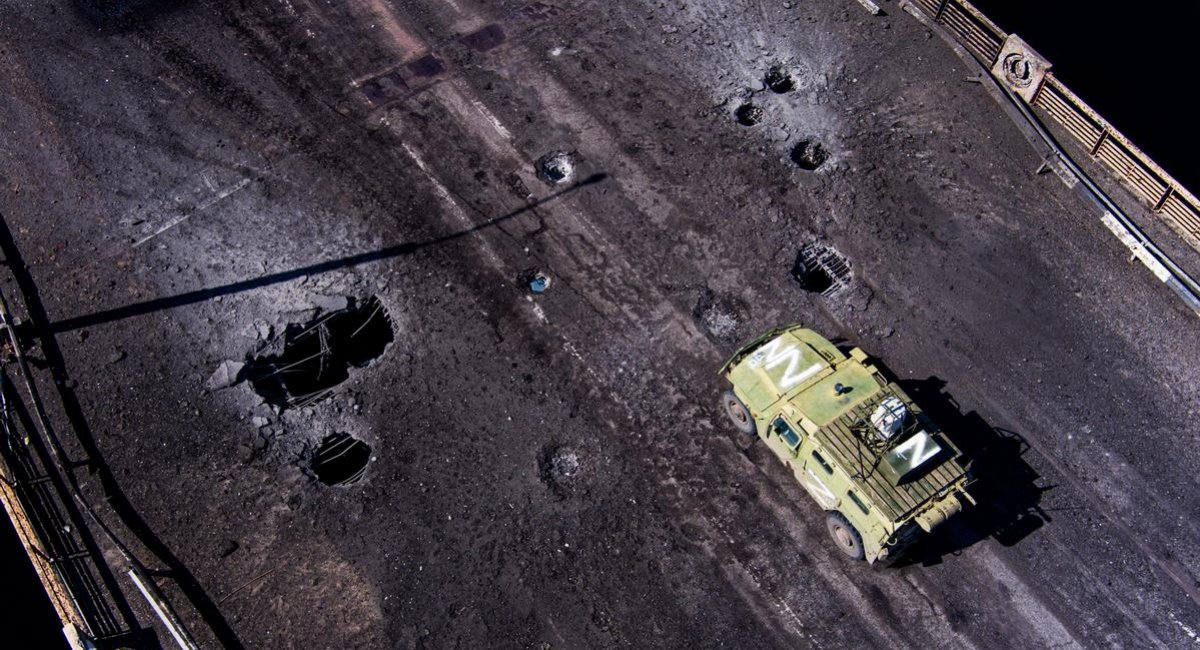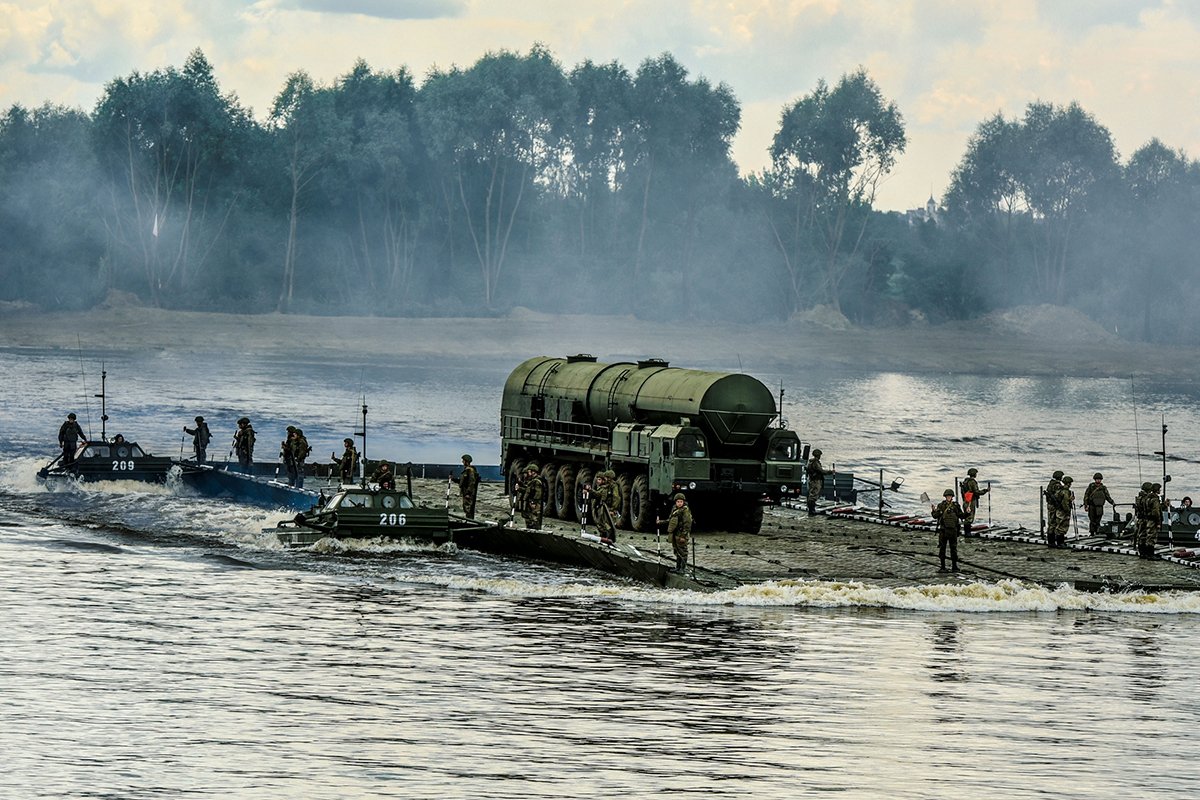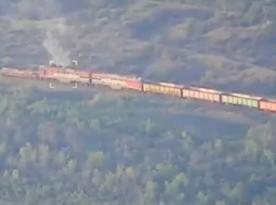A new report from The Drive on the situation in Ukrainian battlefields came out recently. Among other things, the authors paid attention to the assessment by DefMon regarding the russian road construction from the Crimean Peninsula to Melitopol, a major city in southern Ukraine.
The alternative route lies through Dzhankoi – Zavit-Leninskyi – Henichesk – Azovske and further to Melitopol, and is marked on the map with the orange arrow. DefMon stated that such an infrastructural solution would help the russian army to take their Crimean logistics out of range of Ukrainian long-range artillery, namely M142 HIMARS and Tochka-U tactical ballistic missile systems.
Read more: Fleeing from Kherson, the russians Left Many Trophies for the Armed Forces of Ukraine

However, the use of another route via the Arabat Spit marked by the pink arrow was even earlier confirmed by the Ukrainian Defense Intelligence: in the report from November 3. Moreover, it was said that this road was reconstructed by the russians back in the first months of invasion, and this allowed them to cut the distance at least 120 km shorter.
Then, the report from the "Information Resistance" published on November 25 informed that the road laid through the Arabat Spit would be widened so it has more capacity and thus enhanced throughput.

Before February 2022, the route along the Ukrainian-controlled part of Arabat Spit was unpaved, only 30 km out of roughly 115 km of the route (according to the map) was covered with asphalt pavement. The instructions for "repair and expansion" clearly mean that the russian occupiers want to build a solid surface along the entire spit length. Metal plates, for example, could be used for airfields.
Moreover, on the example of the battle for Kherson, we already know that russians are capable of non-trivial logistical solutions, such as the barge crossing along the Antonivskyi Bridge all holed up after HIMARS strikes; or the crossing at the Kakhovka HPP when they drowned stolen railway wagons and made an embankment on top which allowed the passage of trucks and installation of a pipeline.

The width of Arabat Spit varies from 200 to 8,000 meters which means they could try also to establish a pipeline for fuel supplies and spare some trucks for the delivery of food and ammunition to the currently occupied city of Melitopol instead.
In the 1950s, a railway operated along the Arabat Spit, providing service for local salt production. Therefore, russians might believe there are still geological conditions for intensive work of infrastructure facilities on this spit.

There’s also a possibility russian army will try to use the port in the temporarily occupied Henichesk for the transshipment of goods from Crimea for their troops near Melitopol. The seaport in this city has actually been inactive for several years, but the infrastructure’s been preserved. Therefore, the russians can at least try to transfer cargo by sea and through Henichesk in small batches. Just as it is now happening in Mariupol.
In summary, the russians have plenty of options on their hands on how to avoid Ukrainian fire control of supply routes from Crimea, instead of the previously used road via Armiansk, which became a real threat after the liberation by Ukrainian forces of Kherson and its surroundings on the right bank of Dnipro river.
Consequently, for the Ukrainian side, it becomes more important to regain control of Melitopol as the key logistical node of the russian forces in southern Ukraine.

Read more: Ukraine’s Armed Forces Used Tochka-U Missile or Vilkha MLRS to Demolish russian Armoury to Ensure Successful Counteroffensive in Kharkiv Region














